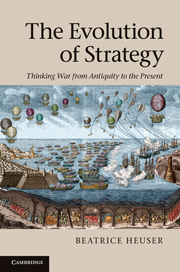Book contents
- Frontmatter
- Contents
- Acknowledgements
- A note on referencing
- Part I Introduction
- PART II Long-term constants
- PART III The Napoleonic paradigm and Total War
- PART IV Naval and maritime Strategy
- 8 Long-term trends and early maritime Strategy
- 9 The age of steam to the First World War
- 10 The World Wars and their lessons for maritime Strategists
- 11 Maritime Strategies in the nuclear age
- PART V Air Power and nuclear Strategy
- PART VI Asymmetric or ‘small’ wars
- PART VII The quest for new paradigms after the World Wars
- Bibliography
- Index
10 - The World Wars and their lessons for maritime Strategists
from PART IV - Naval and maritime Strategy
Published online by Cambridge University Press: 05 June 2012
- Frontmatter
- Contents
- Acknowledgements
- A note on referencing
- Part I Introduction
- PART II Long-term constants
- PART III The Napoleonic paradigm and Total War
- PART IV Naval and maritime Strategy
- 8 Long-term trends and early maritime Strategy
- 9 The age of steam to the First World War
- 10 The World Wars and their lessons for maritime Strategists
- 11 Maritime Strategies in the nuclear age
- PART V Air Power and nuclear Strategy
- PART VI Asymmetric or ‘small’ wars
- PART VII The quest for new paradigms after the World Wars
- Bibliography
- Index
Summary
The purpose of war at sea … is to protect one’s own naval traffic and to cut off the enemy’s.
(Admiral Kurt Assmann, 1943: 29)The First World War
However many strategists like Corbett had earlier emphasised the need for amphibious operations, on the eve of the Great War the British, American and indeed German navies wanted to win decisive battles by themselves, not plan jointly with their khaki comrades. Under the influence of Mahan, but also of strategists of land warfare, American official naval Strategy also favoured the offensive, even though when war came, it was not as offensive in execution (Kennedy 1976, 1989). The Royal Navy’s preferred Strategy was a distant blockade and the economic war, but many within it had a soft spot for Mahanian teaching.
The First World War saw only two supremely important naval operations, if one does not count the transport of the British Expeditionary Force to the European mainland, the bottling up of German military vessels in the North Sea and Baltic after the naval battle of the Falkland Islands on 8 December 1914 or the fight against German submarines. These two operations were the unsuccessful attempt to seize the Turkish Straits with the amphibious landings on the Gallipoli (Gelibolu) Peninsula in 1915, and the battle off Jutland (Skagerrak) between the British Grand Fleet and the German High Seas Fleet on 31 May 1916.
- Type
- Chapter
- Information
- The Evolution of StrategyThinking War from Antiquity to the Present, pp. 248 - 267Publisher: Cambridge University PressPrint publication year: 2010



